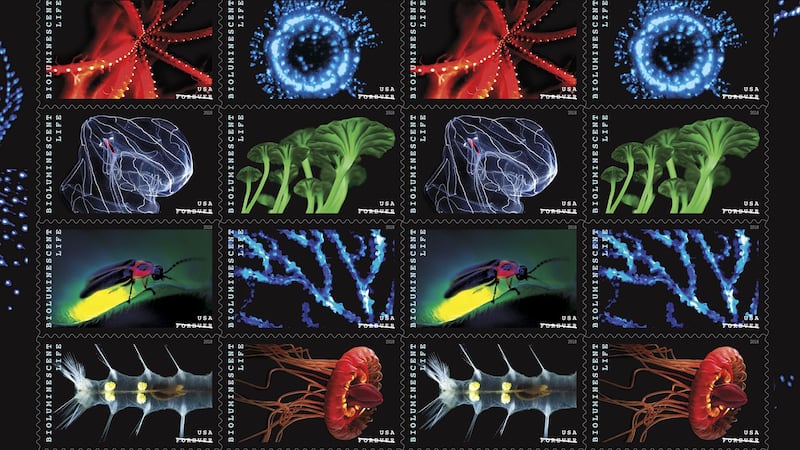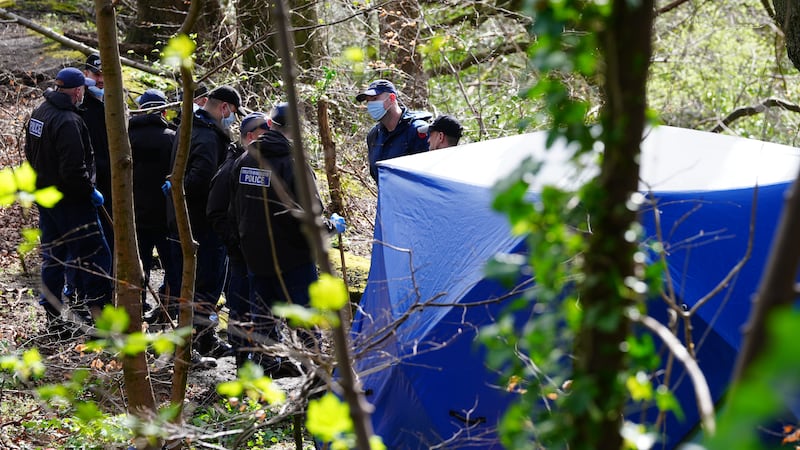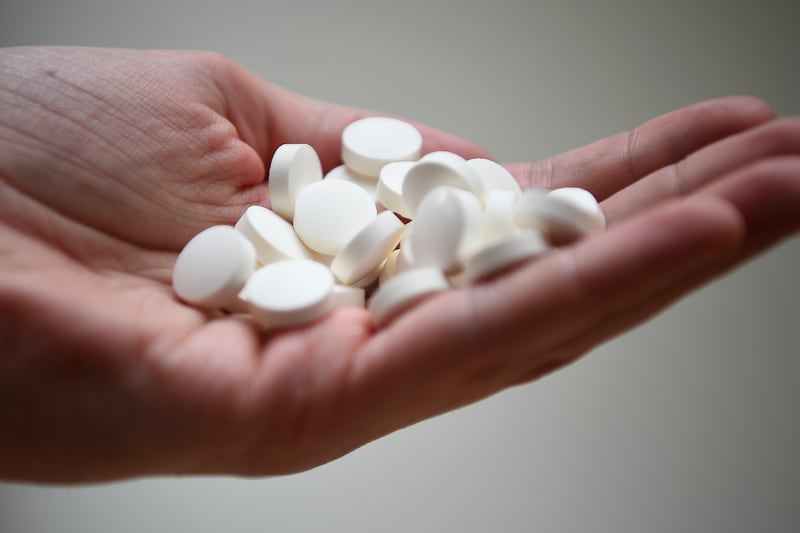The mysterious and breathtaking world of bioluminescent life is being immortalised in a new set of stamps in the US.
Unveiled by the US Postal Service, the 10 stamps are a part of the new Bioluminescent Life Forever collection and feature photographs of live specimens that were taken by scientists.
Although the stamps don’t glow in the dark, they incorporate a holographic effect that is highly reflective in white light.
One sheet of 20 #BioluminescentStamps showcases the many wonders of Bioluminescent life. Order your stamps today!
— U.S. Postal Service (@USPS) February 22, 2018
Jeffrey Williamson, executive vice president of the US Postal Service, said: “These stamps were created so that they reflect back light to mimic the effect of bioluminescence.
“Much like the magical creatures we’re celebrating today, these stamps are truly dazzling.”
Deep-ocean octopus (Stauroteuthis syrtensis)
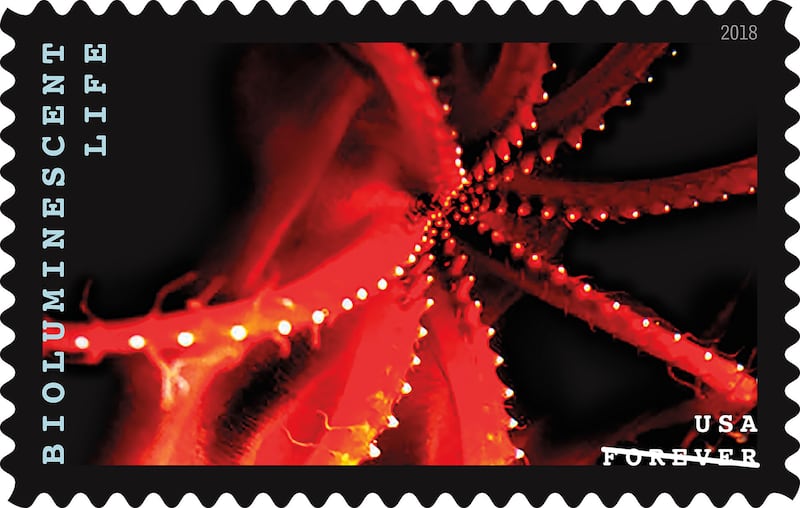
This octopus specimen was collected from the Gulf of Maine in 1997 at a depth of 755m.
The image appeared on the cover of Nature magazine because it proved to be an example of evolution caught in the act – showing light-emitting suckers.
Midwater jellyfish (Atolla vanhoeffeni)
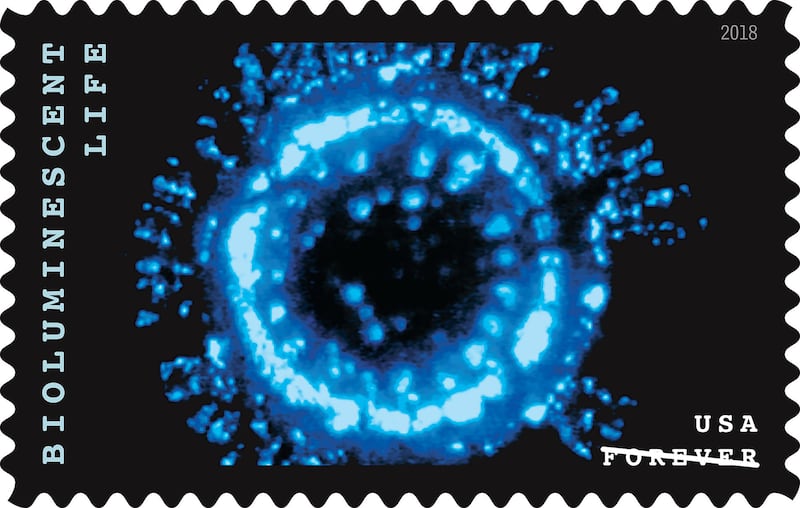
This jellyfish specimen was collected in the Gulf of Maine in 1999. Its display of bioluminescence was filmed with an intensified video camera and a still was colourised to match the emission spectrum.
Deep-sea comb jelly (Bathocyroe fosteri)
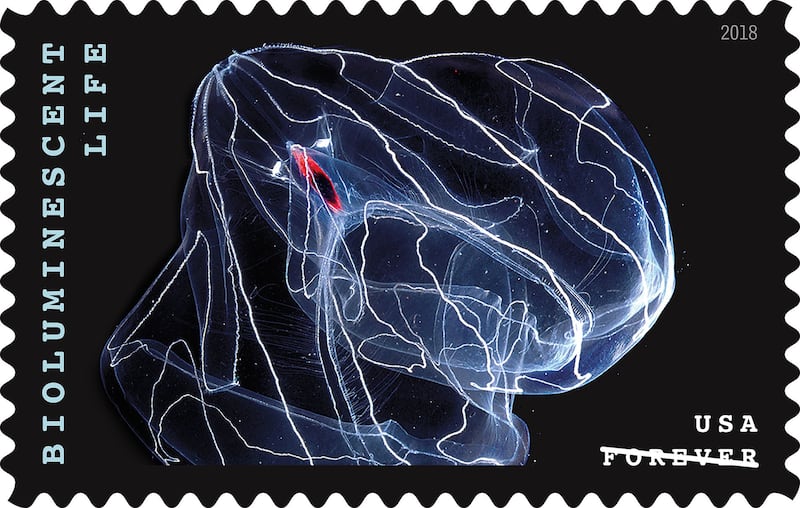
This is a common comb jelly and was found between 200 and 1,000m below sea level.
Although it has a transparent body, its gut contains pigment that helps mask the light emitted by its luminescent prey.
Bamboo coral (Keratoisis flexibilis)
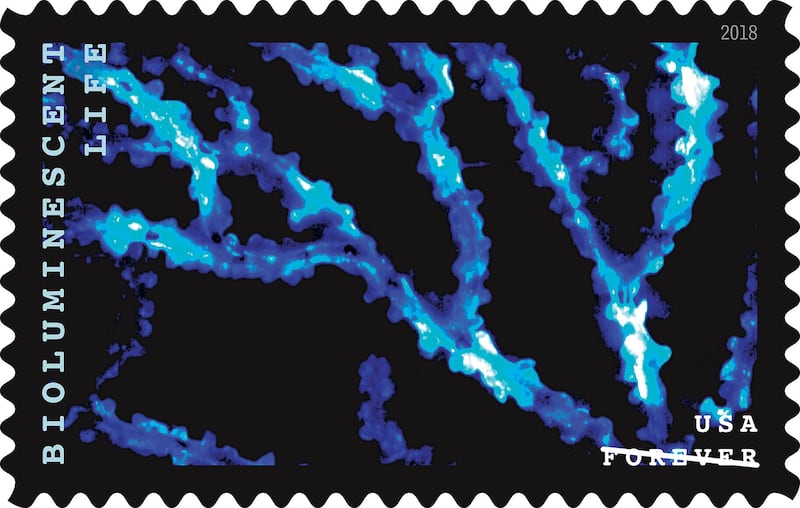
This bamboo coral was collected in the Gulf of Mexico in 2004 at a depth of 306m.
Rubbing up against this coral releases large amounts of slime and has been described as lighting up “like a Christmas tree”.
Marine worm (Flota)
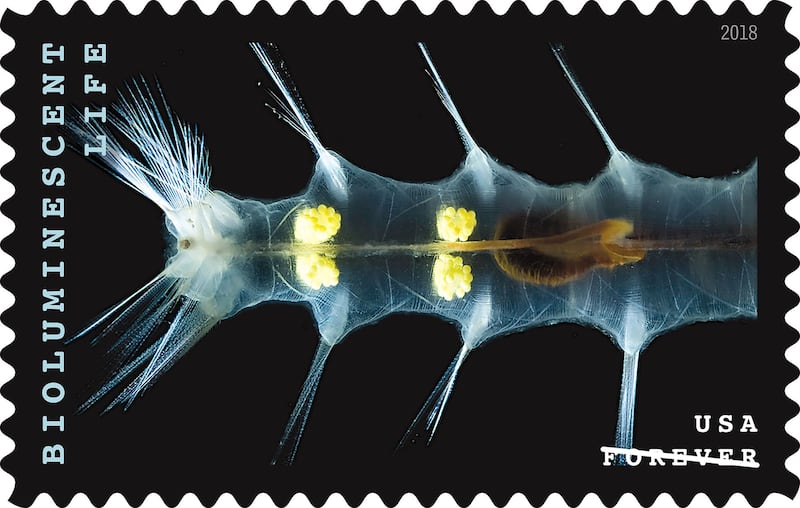
This species is much like an earthworm but adapted for life in the midwater.
It was collected in the Gulf of California in 2003 at a depth of 957m below sea level. This marine worm emits blue-green light.
Crown jellyfish (Atolla wyvillei)
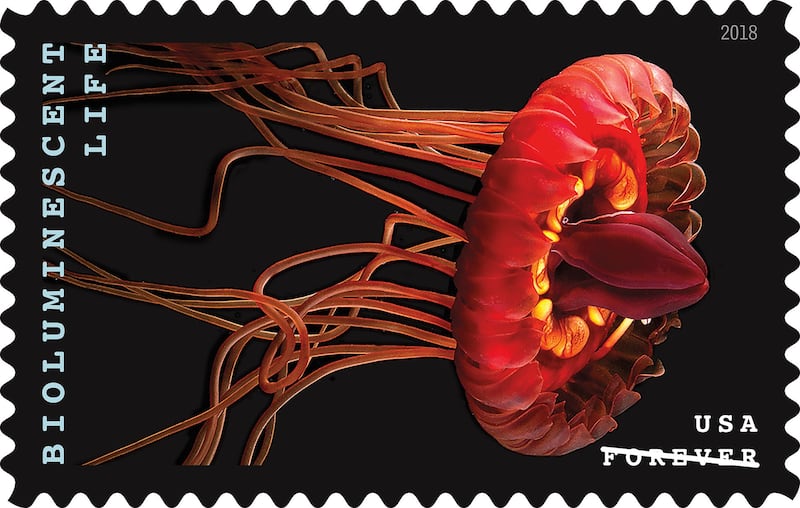
This bioluminescent jellyfish was collected in the Gulf of Maine in 1999.
Sea pen (Umbellula)
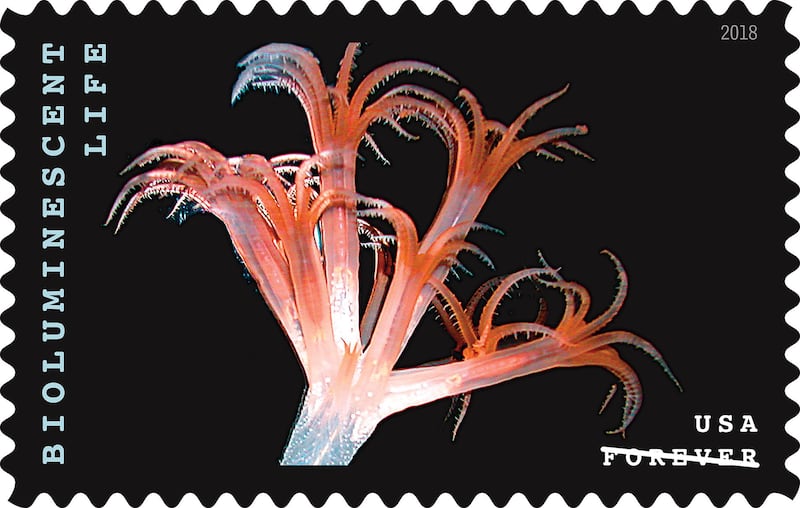
This deep-sea sea pen, sometimes called the droopy sea pen, was collected from 900m below sea level in Monterey Canyon.
Mushroom cluster (Mycena lucentipes)
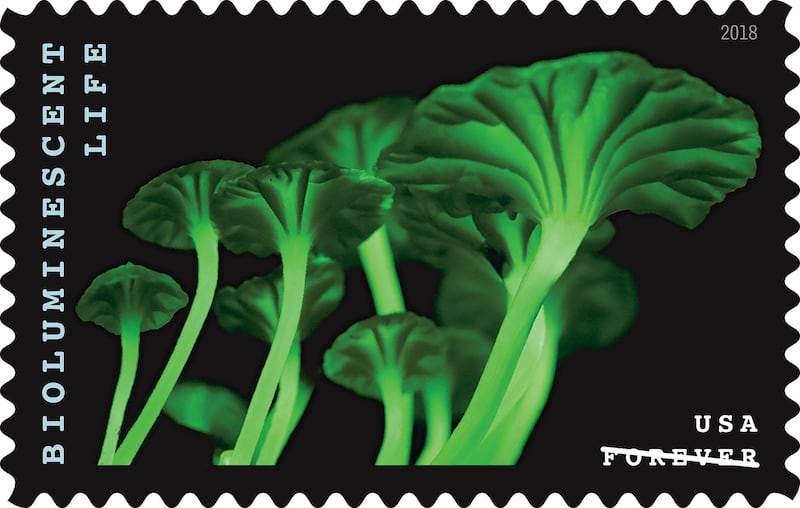
The mushroom cluster photo was taken in the darkness of the jungles of Brazil.
There are only about 85 of these glow-in-the-dark wonders named and recorded from around the world.
Firefly (Lampyridae)
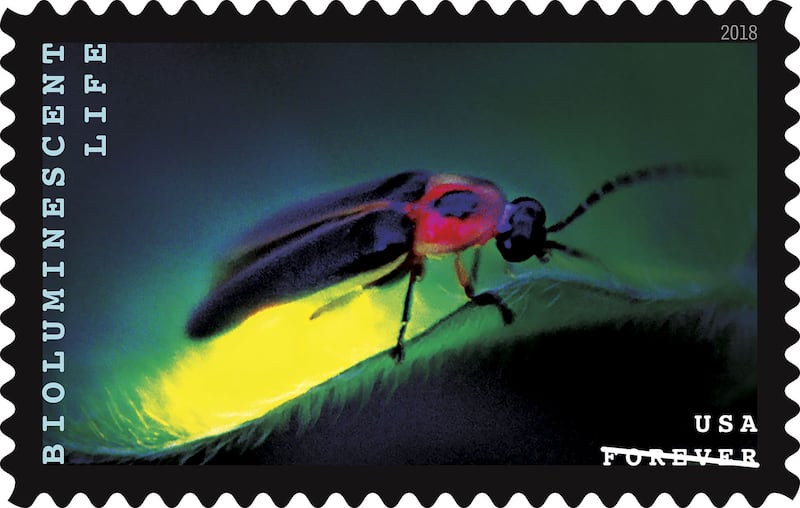
The image was taken 10 years ago in Lafayette, Indiana, in a soybean field.
Marine worm (Tomopteris)
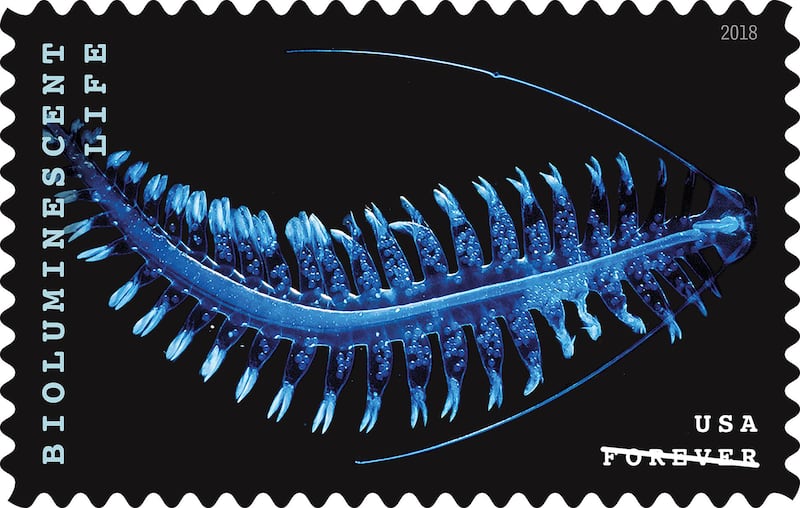
The specimen was collected from about 400m below sea level.
Unlike most animals in the ocean which emit blue or green bioluminescent light, this worm is one of the very few that glows yellow instead.
